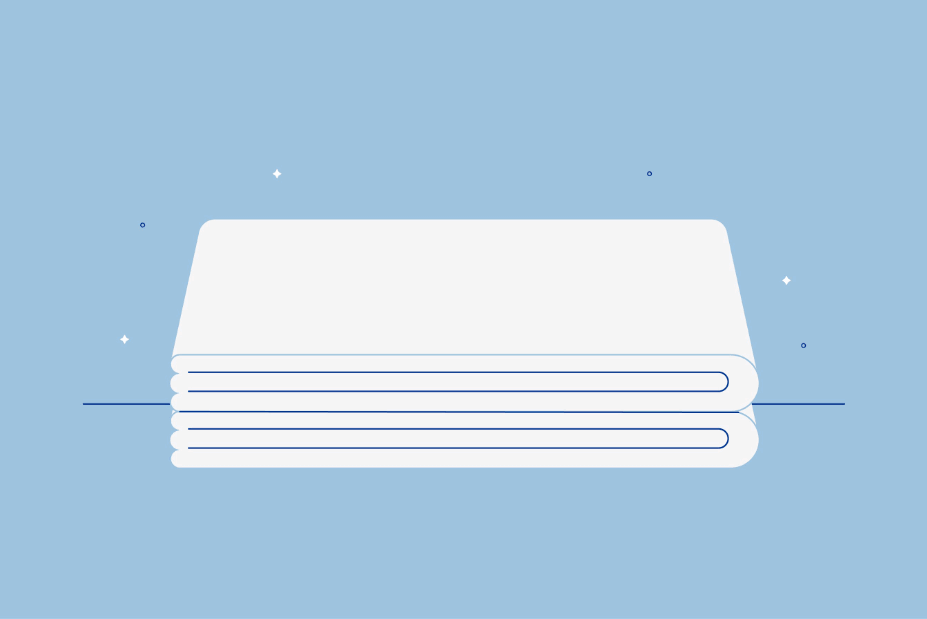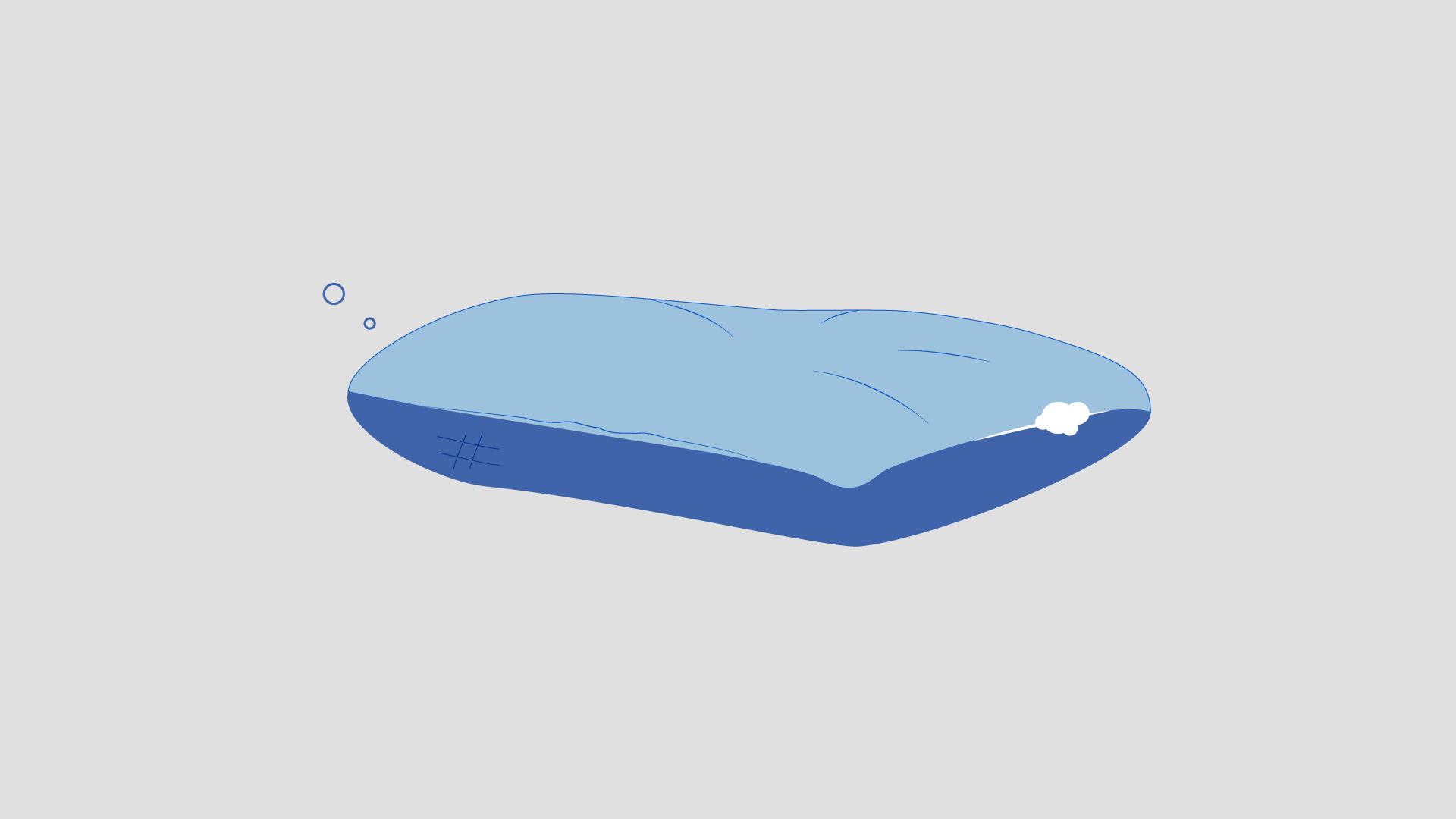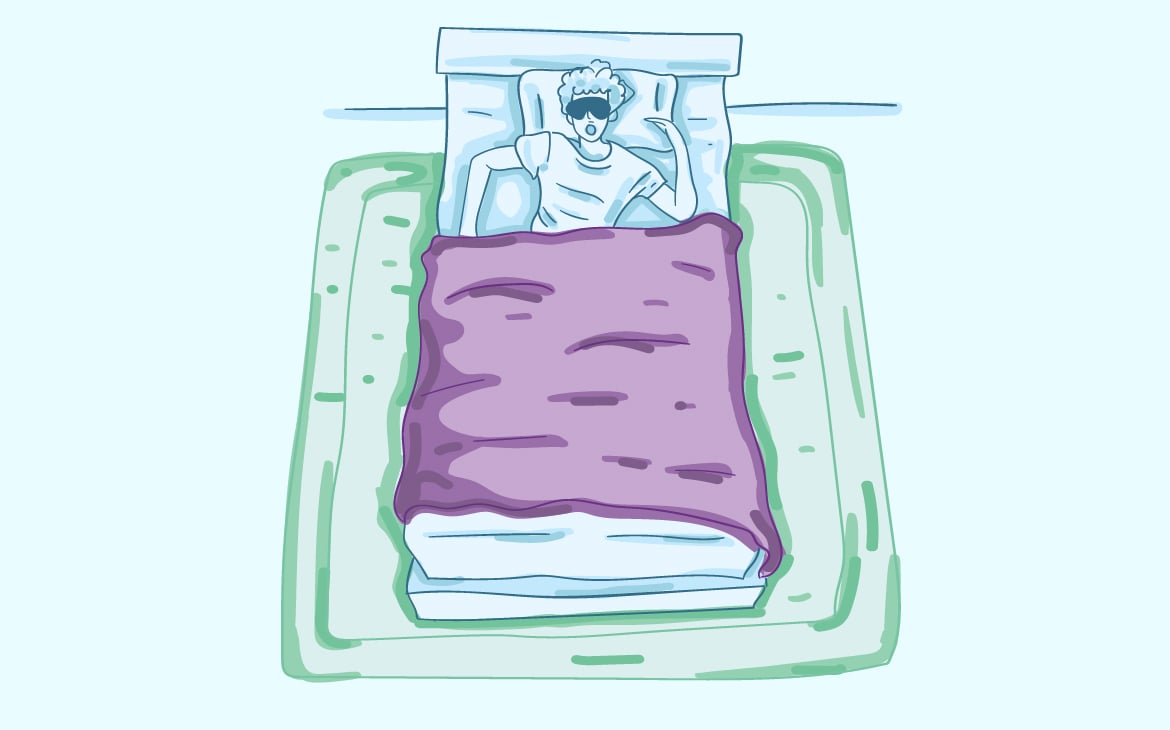Key Takeaways
- The Importance of a Cool Sleep Environment: Maintaining a cooler temperature in your bedroom enhances sleep quality because humans are physiologically wired to sleep at night, which is naturally cooler. Your core body temperature also decreases during sleep.
- Natural Cooling Strategies: You can employ natural cooling strategies during the day, such as creating a cross-breeze with fans, using ceiling fans to circulate air, and avoiding overusing electronics and lights, which generate heat. Keeping blinds closed and cooking outside can also help maintain a cooler room.
- Cooling Bedtime Routine: To cool down your body at night, consider freezing your sheets briefly, using breathable and moisture-wicking sheet materials, choosing cool pajamas, and investing in a cooling mattress. Sleeping alone, sleeping closer to the ground, and maintaining a cooling bedtime routine can also aid in getting a restful night’s sleep without the need for air conditioning.
Getting a good night’s sleep can be tough in a sweltering room. But a lot of people don’t want to just blast the air conditioning because it’s bad for the environment and your bank account.
“Why do we care about keeping a room cool at night?” asks Dr. Nayantara Santhi. “The temperature in our bedroom and sleeping environment, in general, play an important role. Humans are physiologically wired to sleep at night which is the coolest time of the day. Not surprisingly a cooler temperature facilitates sleep.”
“Did you know that your core body temperature is also lower during sleep than during wake? Furthermore, the circadian rhythm of your core body temperature reaches its lowest during the night. So keeping the room cool at night will enhance your sleep.”
So how do you keep your bedroom at the recommended temperature without cranking up the air conditioning all night? Well, there are a few tricks you can try to save a few bucks on your energy bills.
Some of these tricks have to do with keeping your home cool naturally during the day, so your AC unit doesn’t have to work harder at night. And some of them are more about lowering your body temperature without necessarily lowering the room temp.
Tips to Keep Your Home Cool During the Day
Preventing heat buildup in your home during the daytime hours can help you avoid having to blast the AC at night. This, in turn, can save you tons of money on your electric bill because it’s harder on your AC unit to drop your home’s temperature by many degrees than it is to maintain a steady temperature.
Don’t fret, though. There are a few things you can do to help your home’s HVAC maintain a comfortable indoor temperature without cranking up the air conditioning.
Create a Cross-Breeze
If you want cool air without using the air conditioner, you can create a cross-breeze. The great thing about a cross-breeze is it uses fresh air to help keep your house cool during the day and at night.
To create a cross breeze, place a box fan facing inward in one window and then put another box fan facing outward in a window on the other side of the room. This keeps cool air flowing and circulates warm air out of the room.
If the wind is blowing strong outside, you can also take advantage of the wind chill effect. Open two windows across from one another to let fresh air inside and encourage cooling airflow through your home. Just make sure you turn off the air conditioning, so you’re not letting it outside.
Don’t Forget about the Ceiling Fan
Ceiling fans can be a great help to your air conditioning. They can also work as a standalone cooling solution. It all has to do with manipulating the behavior of hot air and cold air. Hot air is less dense than cold air, so it rises to the top of the room while cold air sinks to the floor. You can take advantage of this behavior by using a ceiling fan.
In the summer, when the air is warm, set your home’s ceiling fans to spin counterclockwise and as fast as possible. This forces hot air downward and cool air upward, preventing the cold air from pooling at the bottom of the room. This helps establish cool temperatures for sleeping during the summer.
On warm days, ceiling fans can stand alone to keep your room cool. On hot days, they can help your air conditioner cool your home more efficiently.
Floor Fans Can Work Wonders
If your room doesn’t have a working ceiling fan, or you want to increase your fan’s cooling power, a floor or pedestal fan can also work wonders. Place these strategically around the room to create a breeze without opening the windows. Increasing air circulation can help your air conditioning unit keep the room cool without overworking.
To really up the cooling ante, you can also put a roasting pan full of ice in front of one or more of the fans. The fans will blow the cooler air coming off the ice’s surface around the room. This can be a great way to stay cool in hot weather.
See also our guide on using a fan while you sleep.
Avoid Overusing Electronics and Lights
Electronic devices radiate warm air from their exhaust fans, and lights create ambient heat. You might not think your home office or pot lights could warm up your room. But if you keep a bunch of lights and electronics running nonstop, it can make it hard to stay cool.
This is especially true if you have server racks, gaming equipment, or other devices with exhaust fans that put out tons of heat.
To help your air conditioner keep your house cool, try to avoid generating excess heat by leaving lighting and devices on when you’re not using them. Cut your lights off and power down your devices when you’re not using them.
Also, consider what kind of lights you’re using. If your lights are all incandescent or halogen, think about switching to LED bulbs. LED lights emit less heat than these other bulb types. So even when you use them, you’re not creating as much heat.
Keep the Blinds Closed
Direct sunlight is hot. So if you want to really help your air conditioner out, you should keep as much of it outside as possible. When daylight enters your room, it hits the floor and warms it up. Warm air rising from the floor will increase the ambient temperature of your room.
The sun’s rays also emit heat all on their own, meaning sunlight will heat up your room even if it isn’t hitting the floor.
So using energy-efficient window coverings like blinds or even blackout curtains can help reduce the temperature of your room. You can play with the transparency of the blinds or curtains until you strike the right balance between having some natural light in your room and overheating it.
Similarly, you might want to consider the colors of your bedroom. Light colors tend to reflect heat while dark colors absorb it.
Cook Outside
Your stove belches out excess heat in spades. That means you really drive up your home’s indoor temperature when you cook a hot meal. The heat rises from the pan, the burner, and the stove itself. It also comes from the steam and smoke from your food. That can make it tough to cool down a room during and after cooking.
If you want to keep the hot temperatures outside, fire up the grill to cook dinner. Cooking outside also has the added benefit of getting you out in the fresh air as well as reducing your electric bills. To keep yourself cool, cook in cooling shade and place box fans around your grill or smoker to help keep air moving around your body. Also, be sure to drink plenty of ice water.
Tips to Cool Down Your Bed At Night
Cooling down bedrooms for better sleep during summer nights doesn’t have to be a hassle. It’s all about shedding heat to help your body lower its core temperature to one that’s ideal for sleeping.
There are several cooling methods you can use to cool a room for sleep. And you can also take measures to regulate your body temperature itself.
Freeze Your Sheets
If you want to stay cooler as soon as you hit the sheets, put your sheets in a plastic bag. Then, stick them in the freezer or refrigerator for a few minutes. This won’t help you stay cool all night, but it will help your body cool itself down to prepare for sleep.
Find the Right Sheet Material
Another way to stay cooler at night is to get a breathable and moisture-wicking material for your sheets. Some types of bed sheets are designed to stay cool better than others, after all.
Cotton sheets are a popular choice. They are highly breathable and can keep the air flowing around your body. They also absorb moisture to wick away sweat.
Tencel sheets are also renowned for their ability to stay cool, and we compare the two materials in our Tencel vs cotton sheets guide.
Linen and lyocell made from eucalyptus or bamboo viscose are also wonderful options. Shockingly enough, wool can also help keep you cool. Most people think of wool as a warming material, but it’s actually designed to insulate. That means it keeps out the cold in winter. But it also keeps out the heat in summer.
Quick Guide: A 30-Second Summary
| Best Cooling Tencel Sheets | Amerisleep Tencel Sheets |
| Best Cooling Bamboo Sheets | Amerisleep Bamboo Sheets |
Dress for the Weather
To keep your body cool without AC, choose pajamas that pull heat away from you. Just like with sheets, cotton PJs can help keep air flowing around your body and wick away moisture. To increase their cooling power even further, spray a little cold water on your cotton PJs. The water will help cool you as it evaporates, almost like a DIY air conditioner.
Cotton PJs can also help your house fan keep you cool by allowing the air circulated by your house fan to circulate closer and faster around your body.
Get a Cooling Mattress
A cooling mattress can go a long way to helping you keep cool without AC. Mattresses can help you cool off in several ways. Mattresses known for their breathability include:
These breathable mattresses create a flow of air straight through the whole mattress to pull body heat away from you and help ready the bedroom for summer.
Other mattress types, like gel memory foam mattresses, are made of conductive material that absorbs the heat your body creates and pulls it away from you. Gel memory foam is usually more affordable than latex or hybrid mattresses. However, gel memory foam is not as breathable as these mattresses, making it less cooling.
At Amerisleep, we rely on a specialty cooling memory foam that’s different from gel memory foam. Our Bio-Pur® foam is partly plant-based, unlike traditional memory foam’s wholly synthetic structure. The natural ingredients that make up part of Bio-Pur® foam’s production create a more breathable structure.
Sleep Alone
Sleeping with another person drastically increases the temperature of your bed because you have two bodies radiating heat instead of one. So sleeping alone instantly reduces the amount of heat being shed into the sheets and mattress and can help when separate blankets for couples aren’t enough to keep you cool.
Sleeping alone also allows you to sleep spread-eagle. Sleeping with your limbs all spread out away from your body allows it to shed more heat and cool you off faster.
Sleep Closer to the Ground
This is a trick often reserved for sleeping in a heatwave, as you can avoid some of the rising ambient heat in your room by getting closer to the ground.
The best-case scenario is to move your bed to a basement bedroom if you have one, but as a basement isn’t a feature in all homes you may have to see what else you can do.
Some may find themselves stretching out and sleeping on the floor with only thin padding underneath. However, this isn’t recommended for older adults and others with movement issues and joint-related conditions.
While keeping your mattress on the floor isn’t usually recommended, it may be the best for those who need its solid comfort and support. Or you can use a slim bunkie board for support instead of a bed frame and the height it adds, while still giving your mattress what it needs to stay in good shape.
Maintain a Cooling Bedtime Routine
There are lots of things you can do before bed to help lower your body temperature. Drinking cold water before bed or taking a cold shower can help you cool down on breezy summer evenings. You might also try putting an ice pack or a damp cloth on your pulse points to cool the blood that passes under them before you go to bed.
However, we can’t recommend sleeping with wet hair. While wet hair can help you cool down at night as the moisture evaporates, there are potential downsides to sleeping with wet hair, such as an increased risk of fungal growth and hair breakage.
To cool a room fast without AC, use fans to remove unwanted heat just before bed. You can also consider spraying your sheets with just enough cold water to dampen them, making the bed to prevent sweating. A mildly damp sheet creates the illusion of a cooler room because the water evaporating off the wet sheet will help cool the air close to your body.
Benefits of Cooling a Room Without AC
It’s no secret that house fans and ice packs on your pulse points and wet sheets aren’t as convenient as just cranking up the central AC or window air conditioners. However, keeping your home cool without using air conditioners is advantageous for a couple of reasons, such as establishing a more green bedtime routine.
The Environment
Air conditioning is not great for the environment for several reasons. First off, ACs emit harmful gasses themselves. That means every time you run your unit, it’s belching out chemicals that could be harmful to the local ecosystem and overall air quality.
That’s not to mention the energy that most air conditioners require. AC units need tons of energy to run. Often, that energy comes from unsustainable sources like fossil fuel plants that pollute the earth and belch greenhouse gasses into the atmosphere. Reducing your AC use can help lower your overall energy consumption.
That means cooling your room without AC is a great solution for reducing your carbon footprint. Keep your home’s temperature as close to the outdoor temp as you possibly can without sacrificing too much comfort. This won’t just reduce your overall negative impact on the planet, but it will also positively impact another aspect of your life: your wallet.
Your Wallet
Most everybody knows that AC isn’t cheap. Whether you have central AC or window units, temperature control is one of the highest costs on your energy bill. That means keeping your room cooler without AC will have a significant impact on your monthly energy costs. Running house fans and bathroom fans, even lots of them, is much cheaper than blasting the AC.
The great thing is you don’t have to completely turn off your air conditioning to save money. Setting your thermostat to 78 degrees Fahrenheit when you’re home can keep you comparatively comfortable and help you save a whole lot on your electricity bill.
If you find 78 a little too warm, just remember a few ice packs to the pulse points and a ceiling fan are a lot less painful than a $300 power bill.
Setting your thermostat to 88 when you’re gone can also help you save because a higher temperature in your home will help slow the rate of heat transfer. Just be careful not to let your house’s interior temperature get too high while you’re out. Lowing the temperature significantly is more of an energy suck than maintaining a somewhat consistent interior temperature.
“The temperature in our bedroom and sleeping environment, in general, play an important role. Humans are physiologically wired to sleep at night which is the coolest time of the day. Not surprisingly a cooler temperature facilitates sleep.”
FAQs
Are there upgrades I can do to my home to keep it cool?
There are two major upgrades you can do to most homes that will help them retain their temperature for longer periods. This will hold true in the winter and summer.
The best way to keep your house cool is to upgrade insulation. You should replace existing insulation with materials that have a higher R-value. This means they’re more resistant to heat transfer. Effective insulation will retain heat in the winter and coolness in the summer. That means better insulation might be an expensive upgrade, but it will keep your bills lower all year long.
Another excellent upgrade to think about is energy-efficient windows. Windows are one of your home’s biggest points of heat transfer. And older windows allow for a lot of air ingress and egress, especially if they have air leaks. Modern energy-efficient windows are much better at helping your home retain its temperature.
Can a mattress topper keep me cool in the summer?
There are lots of cooling mattress toppers and mattress pads that can help cool you off on a warm summer night. Latex is one of the best materials for a cooling mattress topper. Natural latex foam is highly breathable to wick away body heat and moisture. It also has the added benefit of being springy, so active sleepers will enjoy the way it cools them and bounces back.
Gel memory foam mattress toppers can also be a good choice to keep you cool because they absorb heat. This conductive material helps pull your body heat away from you. Side sleepers and back sleepers who don’t move around a lot might appreciate the contouring of gel memory foam over the springiness of latex.
What’s the coolest clothing to wear at night?
You’ll want breathable fabrics that can keep air circulating around your body and wick away sweat. Cotton is one of the best fabrics for the job. It’s highly breathable, so it can keep you cool and dry all night long.
Other cooling and sweat-wicking fabrics include silk, linen, and bamboo viscose fabric. Wool is also a fabric to consider. While wool is known for keeping you warm, it’s actually an insulating material that prevents heat transfer. That means it can help keep you cool on warm nights by keeping hot air out of your PJs.
Which sheets can help keep me cool at night?
Just like with PJs, you’ll need natural, breathable fabrics for your sheets to keep you cool at night. Cotton is just as amazing an option for sheets as it is for pajamas. Cotton sheets are breathable and cooling, so they can help keep you dry and cool.
Linen and satin sheets are also excellent cooling options, as is lyocell. Lyocell is a fabric made from cellulose. It’s typically made from bamboo or eucalyptus trees, so it’s considered a more sustainable fabric than many other options.
Are window units more energy-efficient than central air?
As a general rule, multiple window air units will use a lot more energy than a single HVAC system. So if you’re looking to cool an entire house, central air will be a much more efficient choice than window AC. However, if you’re only looking to cool one room, say your bedroom at night, a single-window AC unit can be the more efficient choice.
If you want to save money on cooling costs, you might consider cooling your house with central AC during the day. Then, you can let it kick off in the evening and use a window unit to cool your bedroom while you sleep since you only need your bedroom cool at night rather than the whole house.
Just don’t let your home get too warm, as cooling it down significantly can take a lot more energy than maintaining a comparatively steady temperature. So consider setting your central AC on a timer to kick off when nighttime temperatures begin to drop and then kick back on when the temperatures start to warm again in the morning.
Bottom Line
A cool bedroom is the key to a good night’s sleep, but on hot nights, it can be tough to keep your bedroom temperature at the recommended 65 to 70 degrees, the best temperature range for sleep. The good news is with a few simple tricks, you can cool your body and your room without AC. That will help you keep yourself cool without taking a massive hit to your wallet.
About the author
April Mayer is a sleep expert and writer with a degree in exercise physiology. She has dedicated her career to exploring the relationship between sleep and productivity. Her insightful articles, such as "The Surprising Way Your Mood Might Be Messing With Your Productivity" and "Wake Up to More Productive Mornings," have been featured in reputable publications like Forbes, Greatist, Real Homes, Thrillist, Tom's Guide, and Eat This, Not That. With a passion for helping others lead more productive lives through restful sleep, April offers valuable expertise on foods and vitamins for better sleep. As a trusted member of the Early Bird team since March 2020, she continues to provide informative and well-researched content.
View all posts



